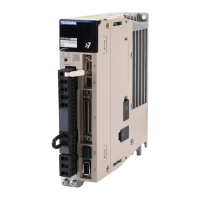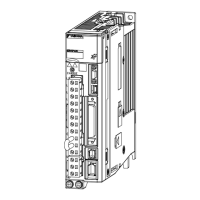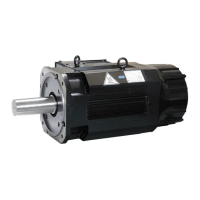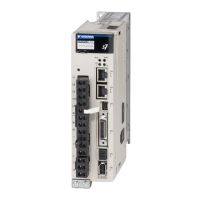7.4 Trial Operation from the Host Controller for the Servomotor without a Load
7.4.1 Preparing the Servomotor for Trial Operation
7-12
Make sure that a reference is not being input.
If you are using a safety function, make sure that the safety function device is con-
nected to CN8.
Refer to the following section for the safety function device connection method.
4.6 Connecting Safety Function Signals on page 4-48
3.
Connect the I/O Signal Cable to the I/O signal connector (CN1).
4.
Turn ON the power supplies to the SERVOPACK.
The control power and main circuit power will be supplied.
5.
Confirm that the Panel Operator display is as shown below.
6.
If you are using an absolute encoder, turn ON the SEN signal.
The current position will be read from the absolute encoder.
This step is not necessary if you are using an incremental encoder.
7.
Check the status of the I/O signals.
• Using the SigmaWin+: Monitor - Wiring Check
• Using the Panel Operator or Digital Operator: Un005 (Input Signal Monitor)
The correct states of the input signals are given in the following table. If the actual states do not agree
with those given in the following table, correct the I/O signals.
8.
Input the /S-ON (Servo ON) signal.
The servo will turn ON.
You can set Pn002 to n.1 (Use the encoder as an incremental encoder) to tem-
porarily use an absolute encoder as an incremental encoder. This makes it possible to
perform trial operation without setting up the absolute encoder or setting the SEN sig-
nal.
Signal Correct State
/S-ON (Servo ON) Signal OFF
/P-CON (Proportional Control) Signal OFF
P-OT (Forward Drive Prohibit) Signal ON
N-OT (Reverse Drive Prohibit) Signal ON
/ALM-RST (Alarm Reset) Signal OFF
/P-CL (Forward External Torque Limit) Signal OFF
/N-CL (Reverse External Torque Limit) Signal OFF
SEN (Absolute Data Request) Signal
• When using an absolute encoder: ON
• When not using an absolute encoder: OFF
CN1
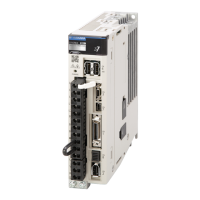
